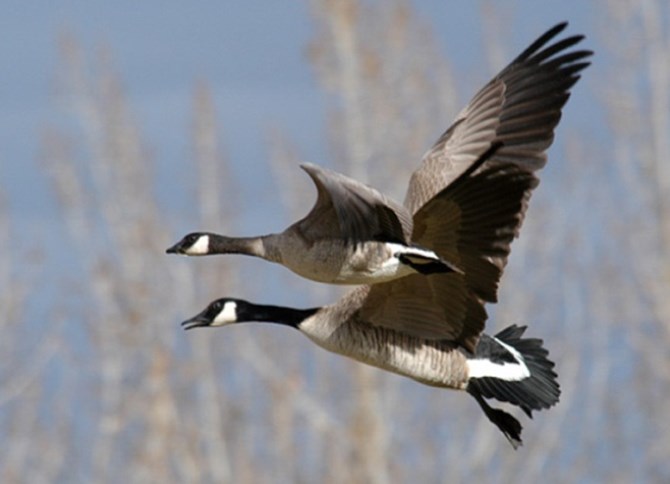
The annual Canada goose egg addling program began in the Okanagan Valley yesterday, March 28, 2016.
Image Credit: Wikimedia commons
March 29, 2016 - 6:30 PM
OKANAGAN - The annual effort to reduce burgeoning populations and negative effects of the Okanagan Valley’s Canada geese is underway.
The Okanagan Valley Goose Management program began yesterday, March 28.
The program, now in its tenth year, is conducted from Osoyoos to Vernon. The program aims to prevent the non-resident migratory Canada goose population, which has grown in the valley since the 1960s when they were introduced, from re-establishing a population in the area, Okanagan Valley Goose Management Coordinator Kate Hagmeier says.
Crews began searching for pairs and their nests yesterday. When a nest is discovered the eggs are addled, which makes the egg non-viable but leaves the adults unharmed.
They are not native to the area, and the program isn’t targeting any natural populations Hagmeier says, noting the geese are very well adapted in the valley though and find various locations to nest.
“We get a lot of nests in planter pots, in tires and such on the end of docks, we’re seeing them on rooftops. People with cottages often find them in planters, or on slightly elevated areas. They like beaver islands, they like to have a good point of view of water, so we even find them on outhouses and sheds,” she says.
Hagmeier says program members have gained a lot of understanding of the birds over the years and says the best indicator of a nest is when a lone male goose is seen.
“When we find a single goose, we know he’s guarding a female, usually just out of sight,” she says.
Hagmeier says they don’t trespass to access the nests, and will contact landowners for permission.
“We have permits from Environment Canada and B.C. Parks, and partner with jurisdictions up and down the valley, so we have permission to access and search in all areas,” she says.
All municipalities contribute to the program, allowing the addling to take a 'landscape' approach which is much more effective than only covering portions of the valley, Hagmeier notes.
The program usually peaks in the third week of April, with most of the work completed by mid-May. Follow up work to track the gosling population is generally conducted in June.
The geese were introduced to the Okanagan in the 1960s to improve wildlife viewing and hunting opportunities.
“There are 11 different subspecies of Canada goose in North America, and where they have evolved is where they were meant to be. She says moving geese from Ontario or Minnesota to B.C. was a mistake.
“Hindsight is 20-20,” she says, adding the introduction of the geese were part of a conservation program that 'went sideways.'
“All the different subspecies are breeding now. A goose from the West Coast would never have met a goose from Ontario in a natural habitat, so they’ve created offspring of no specific definition. It’s a bit of a genetic quagmire, really,” Hagmeier says.
To contact a reporter for this story, email Steve Arstad at sarstad@infonews.ca or call 250-488-3065. To contact the editor, email mjones@infonews.ca or call 250-718-2724.
News from © iNFOnews, 2016